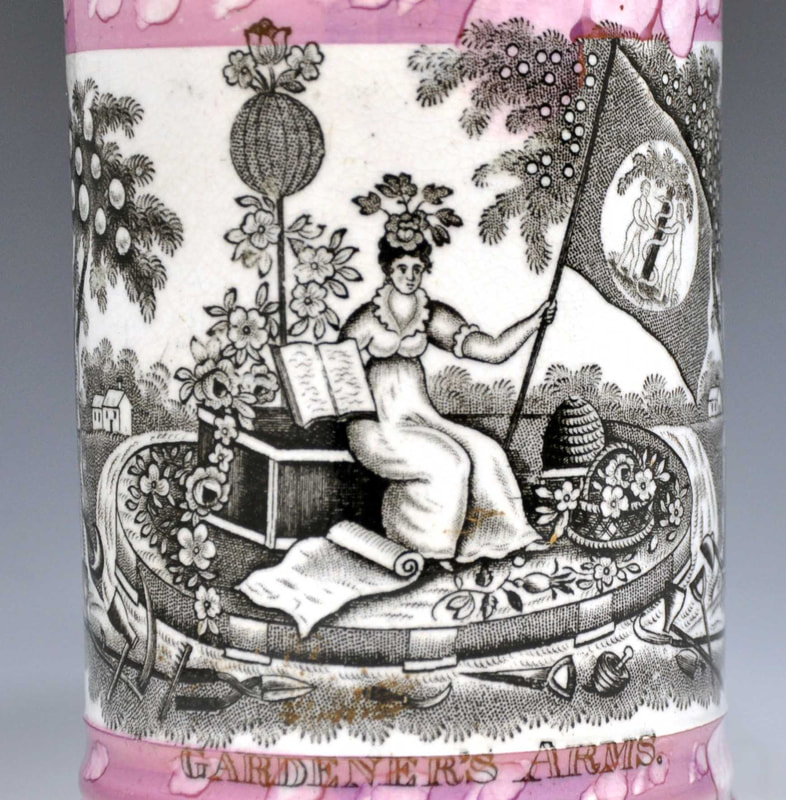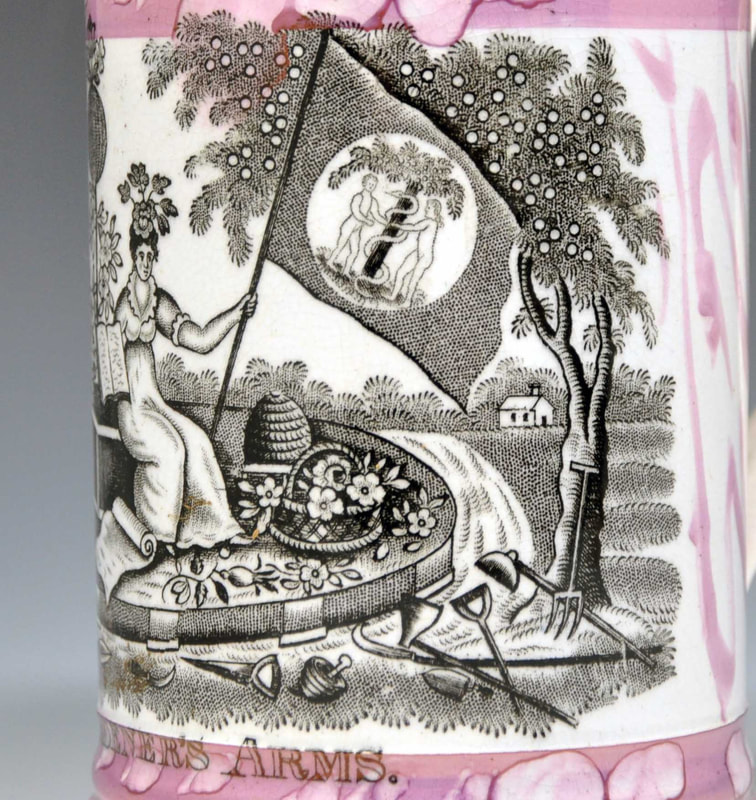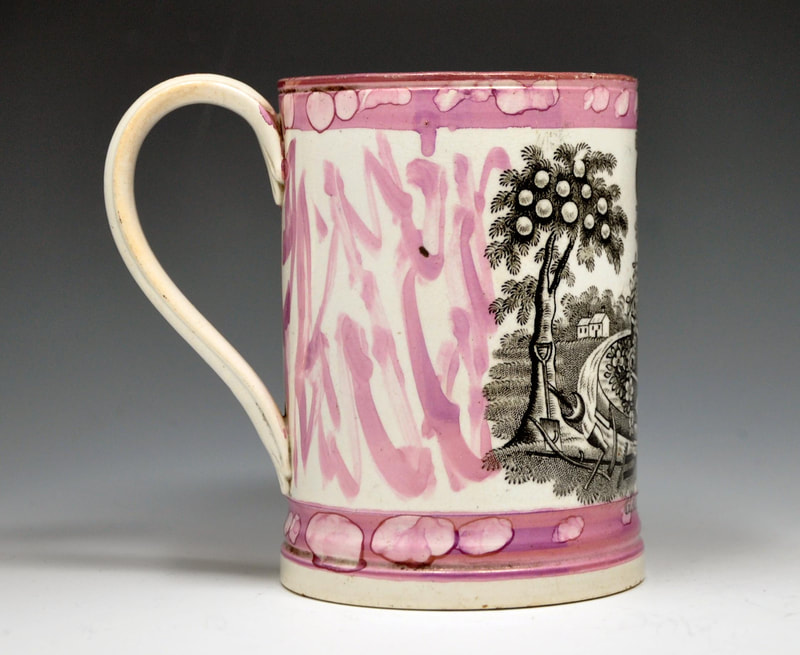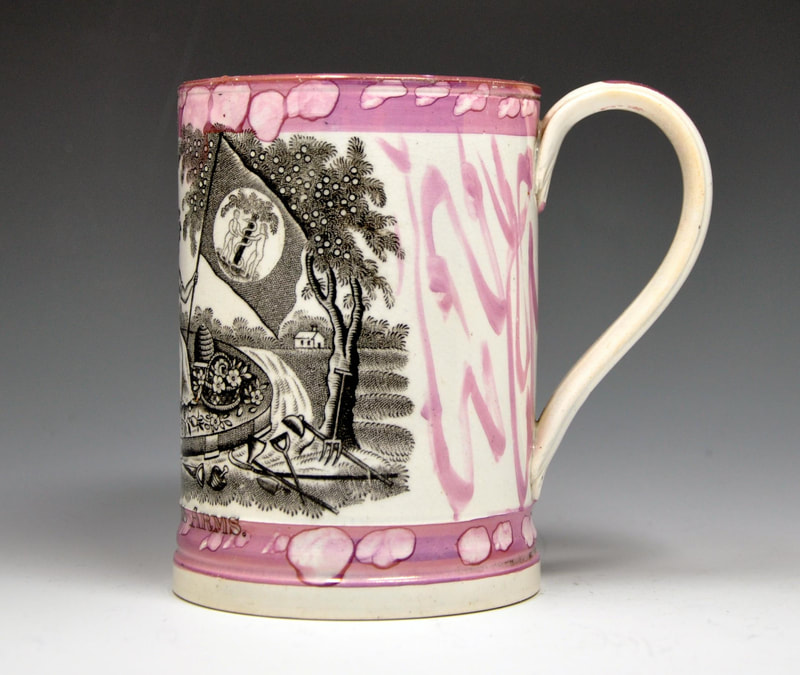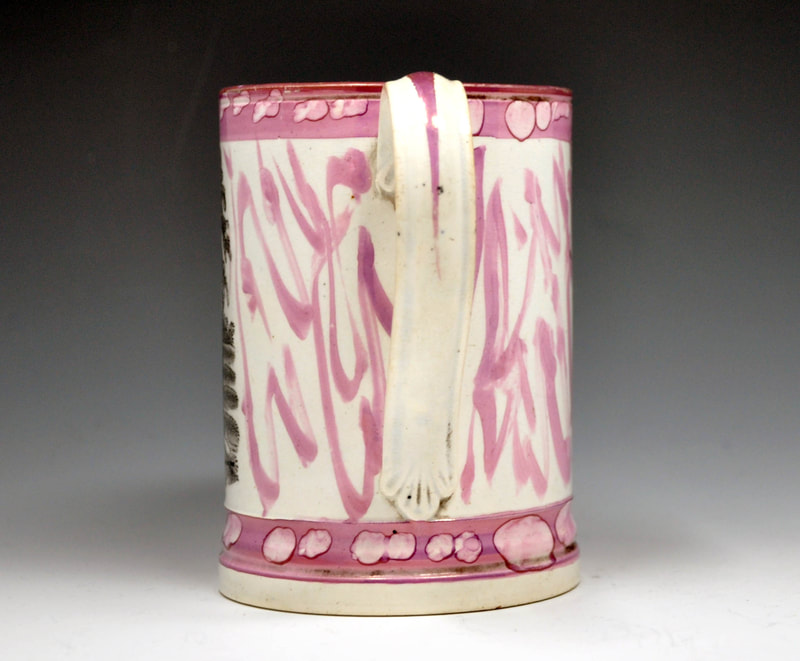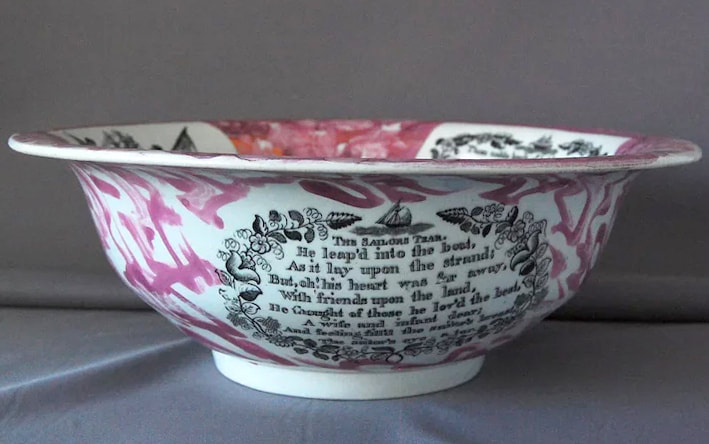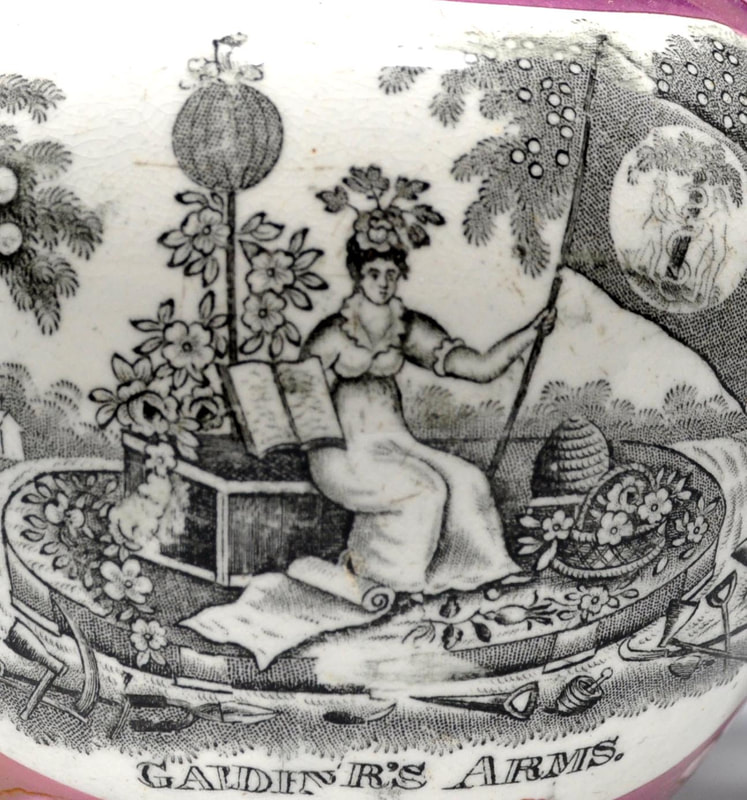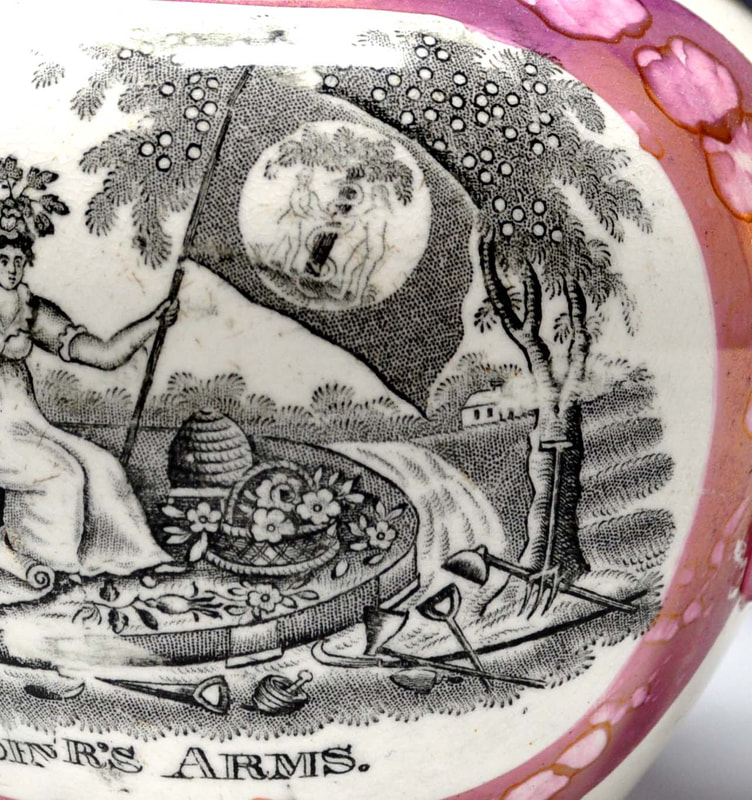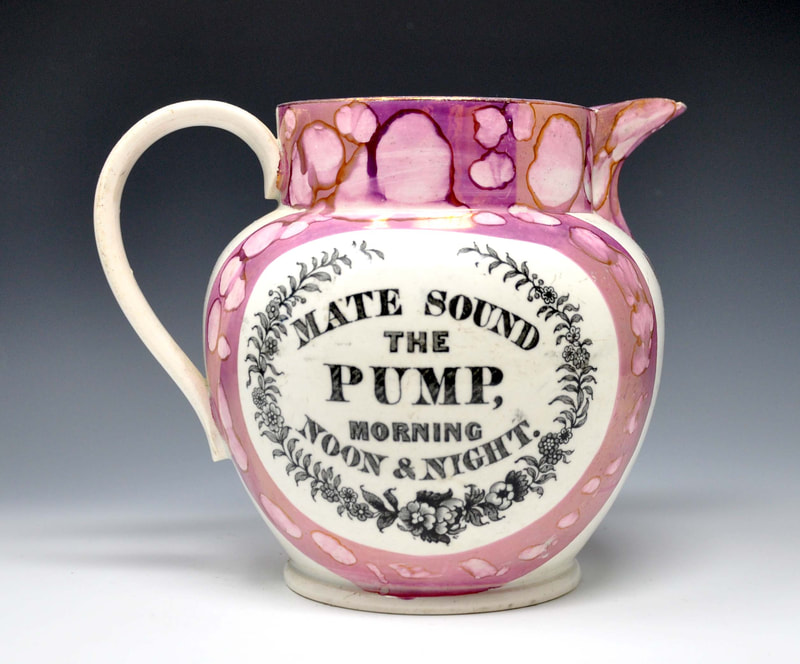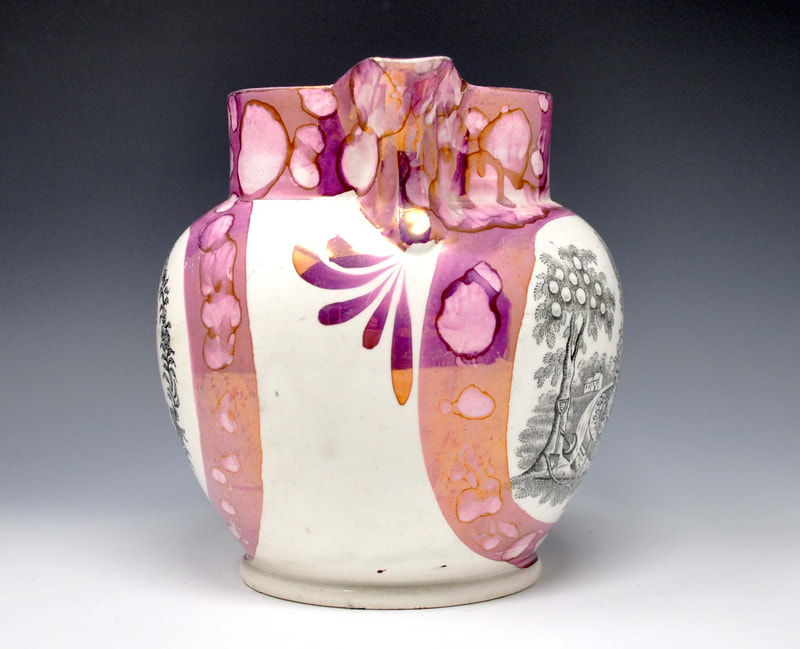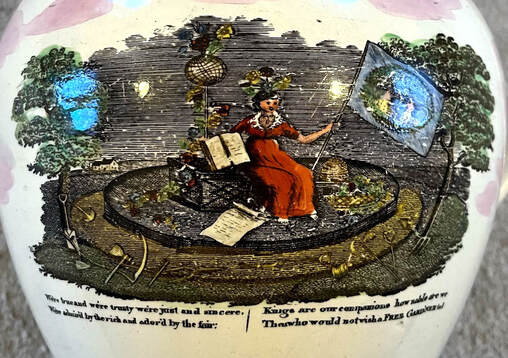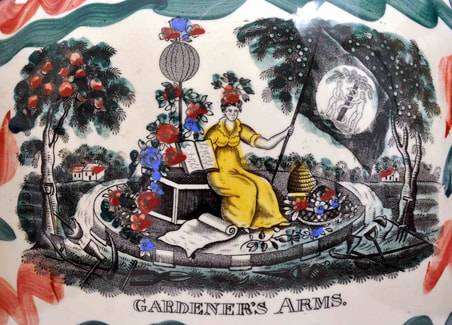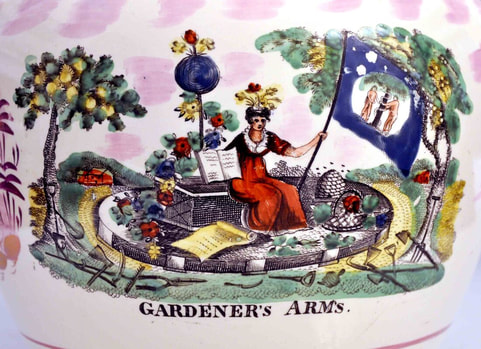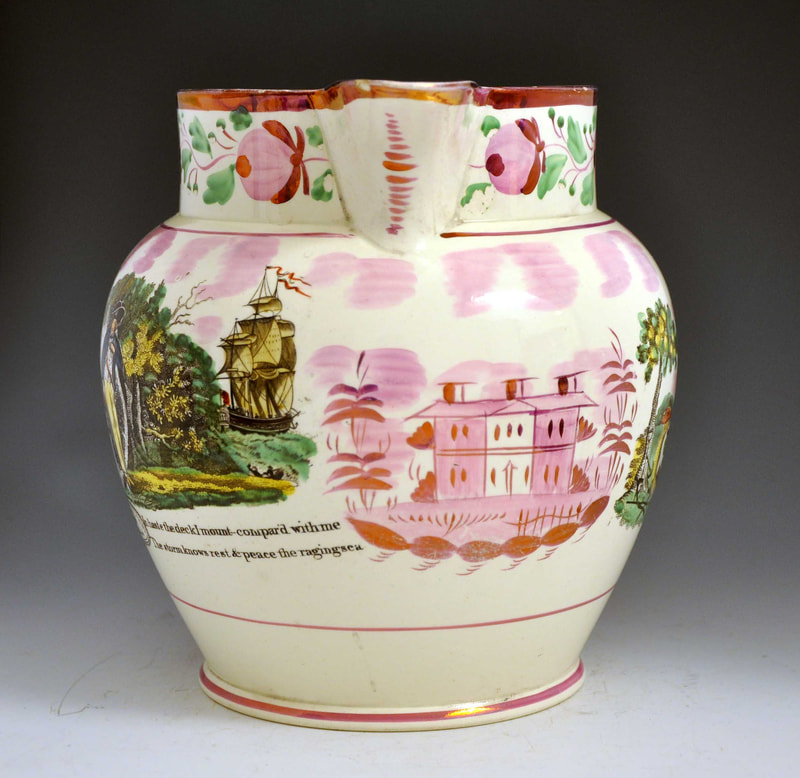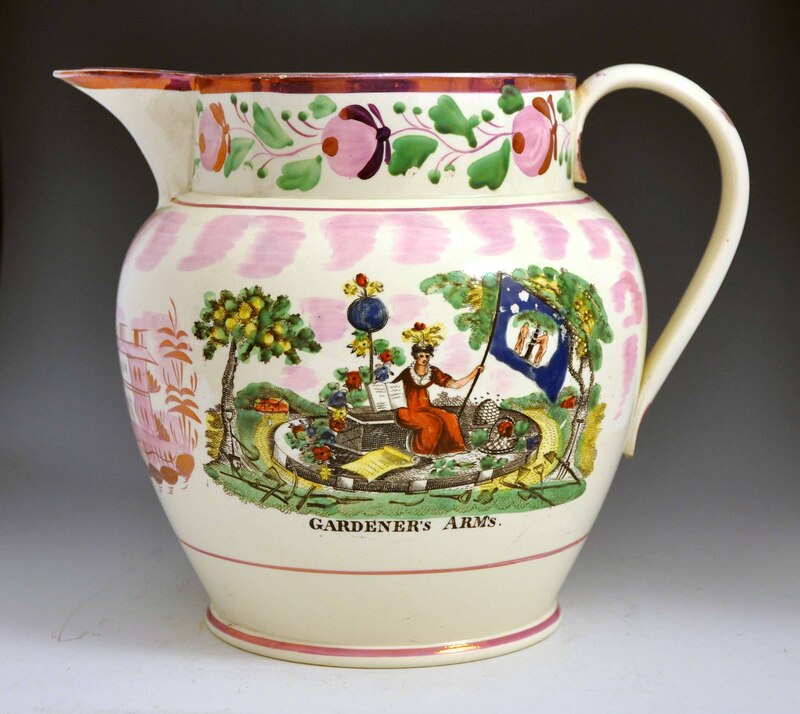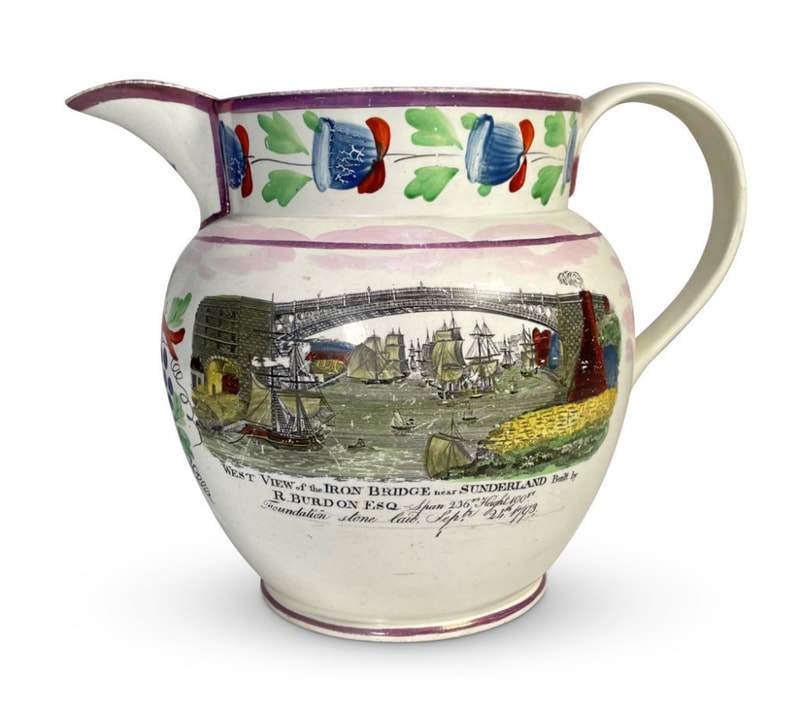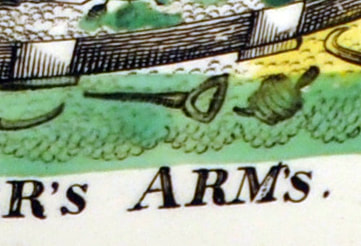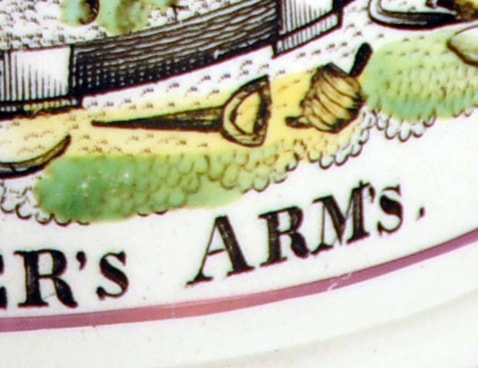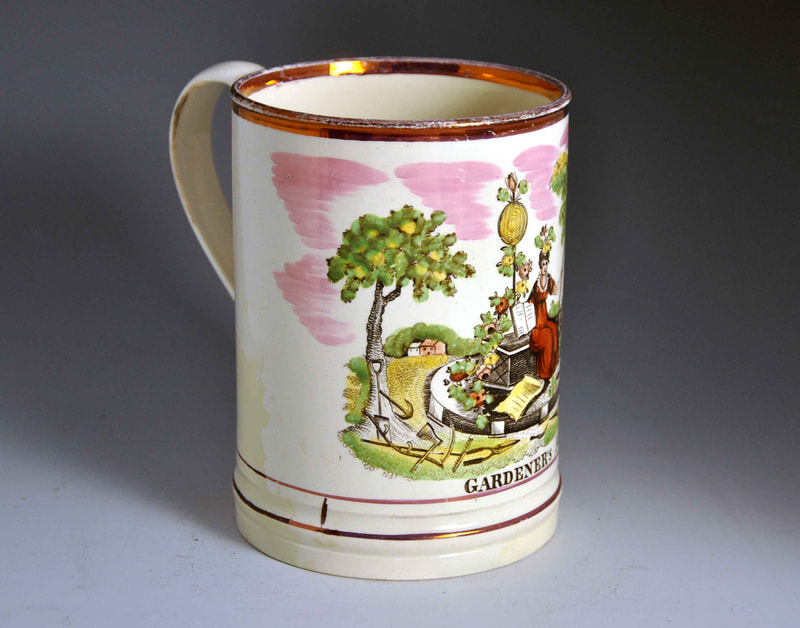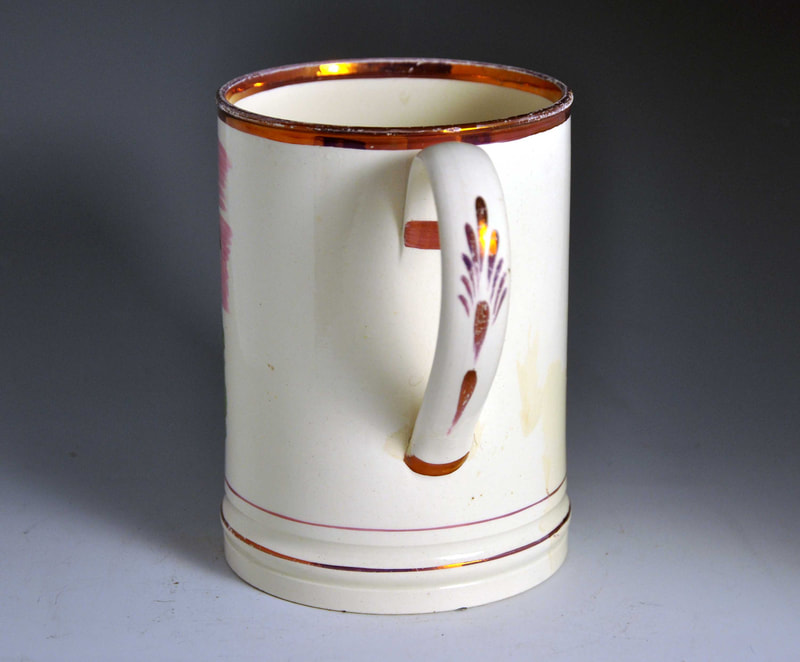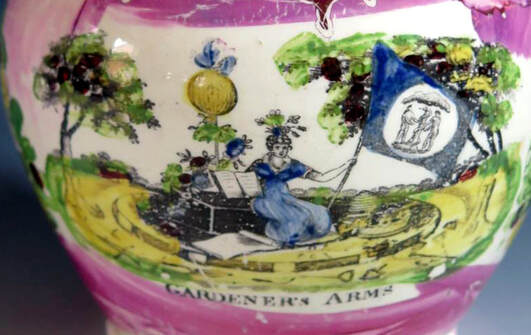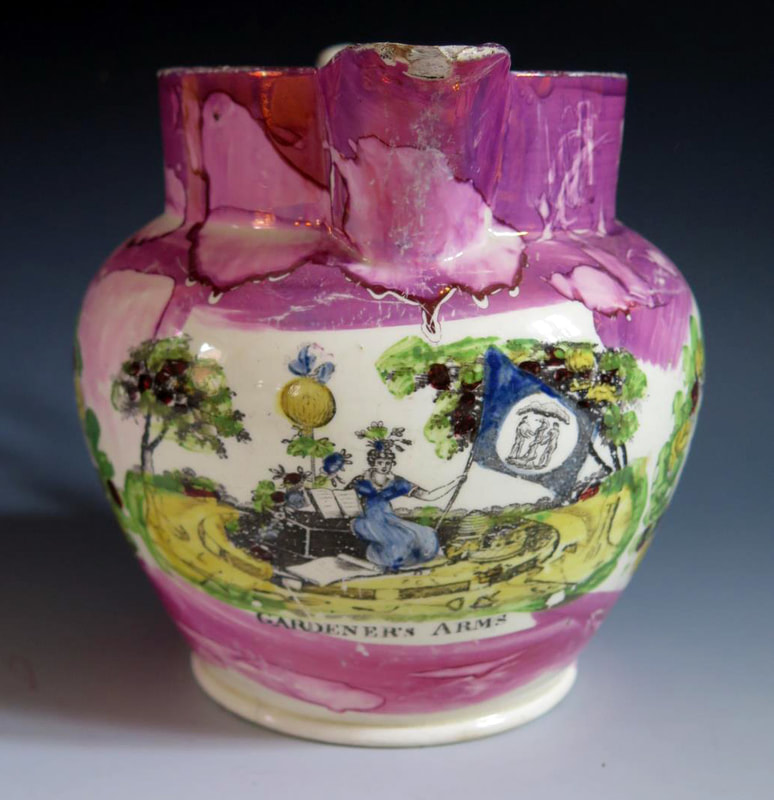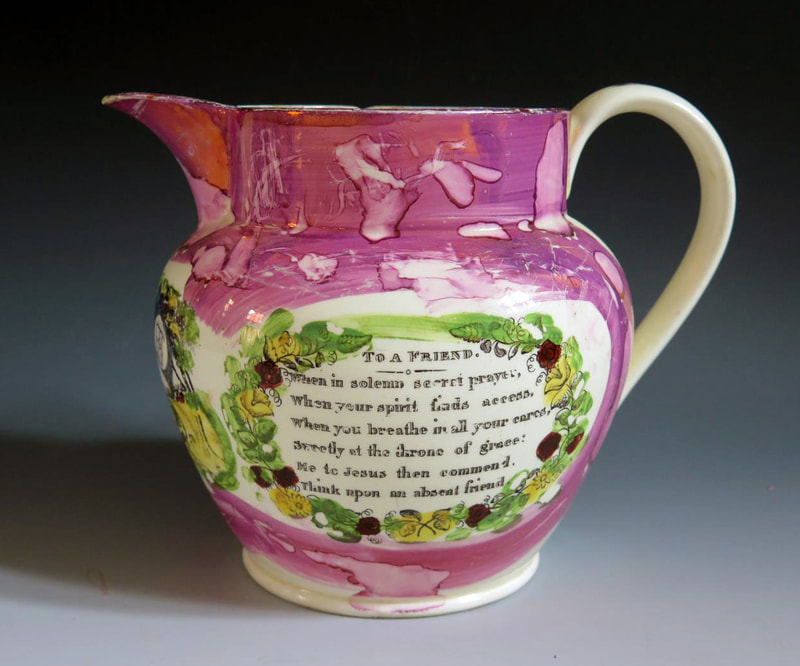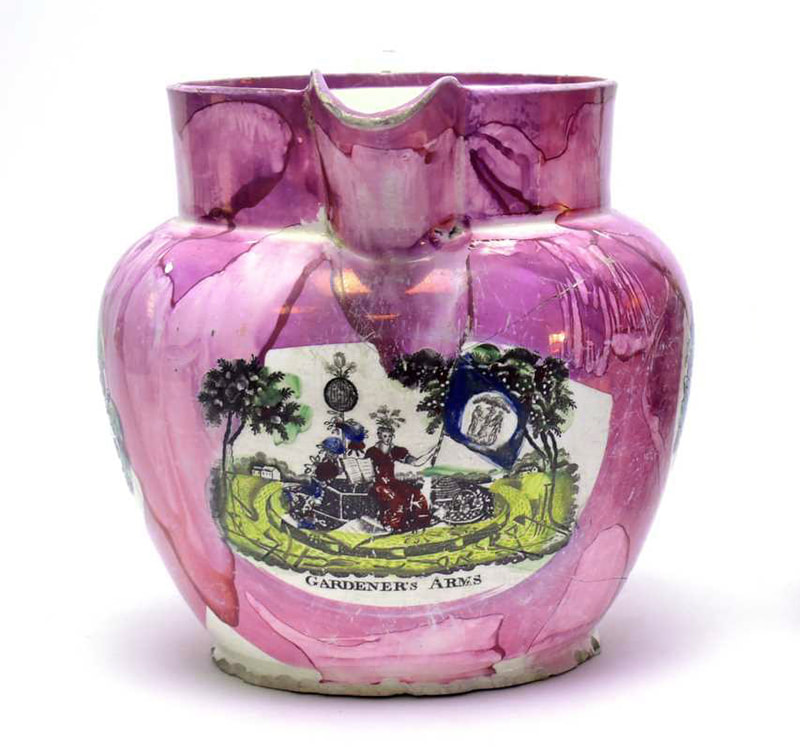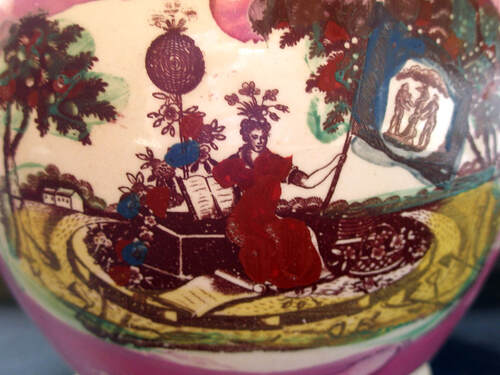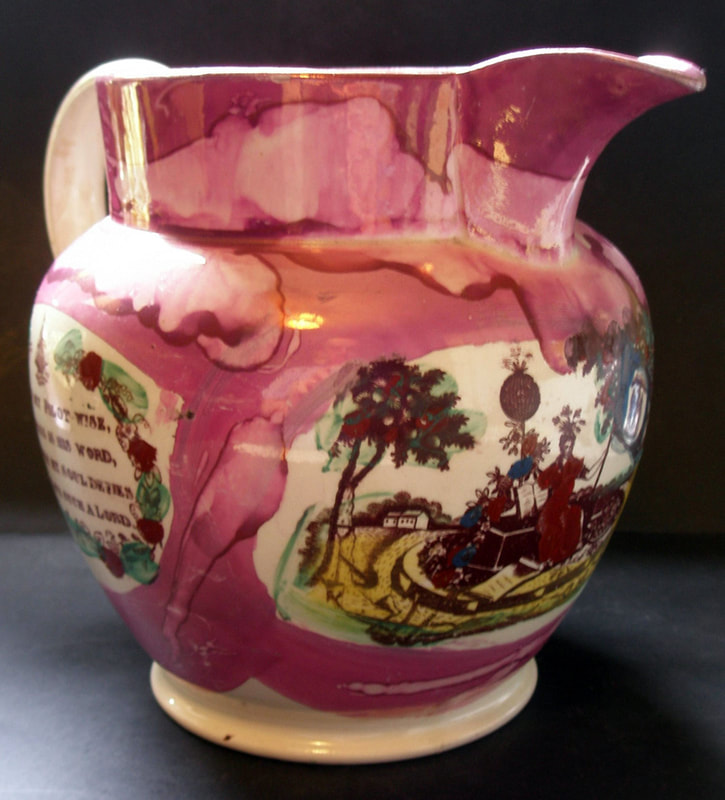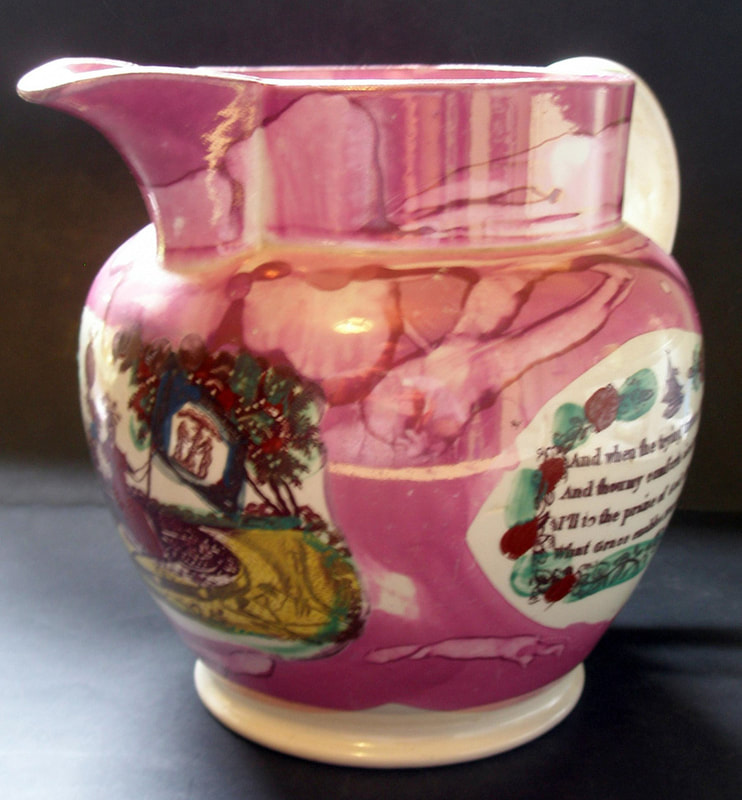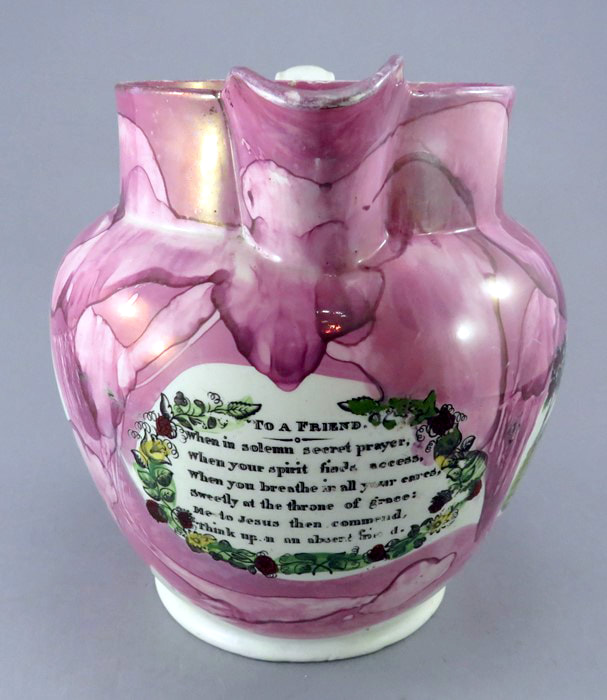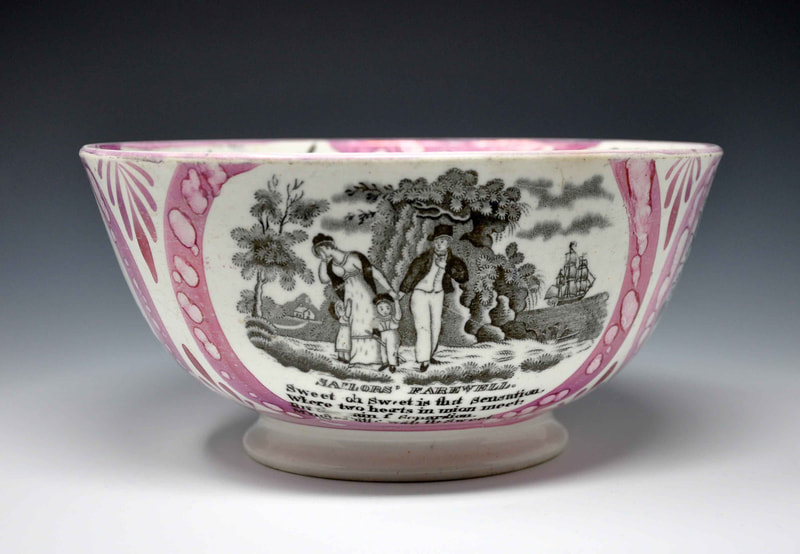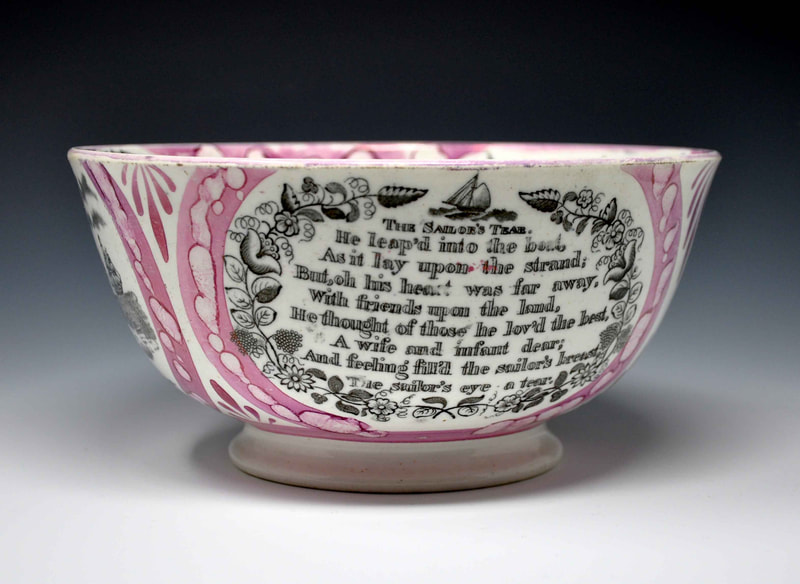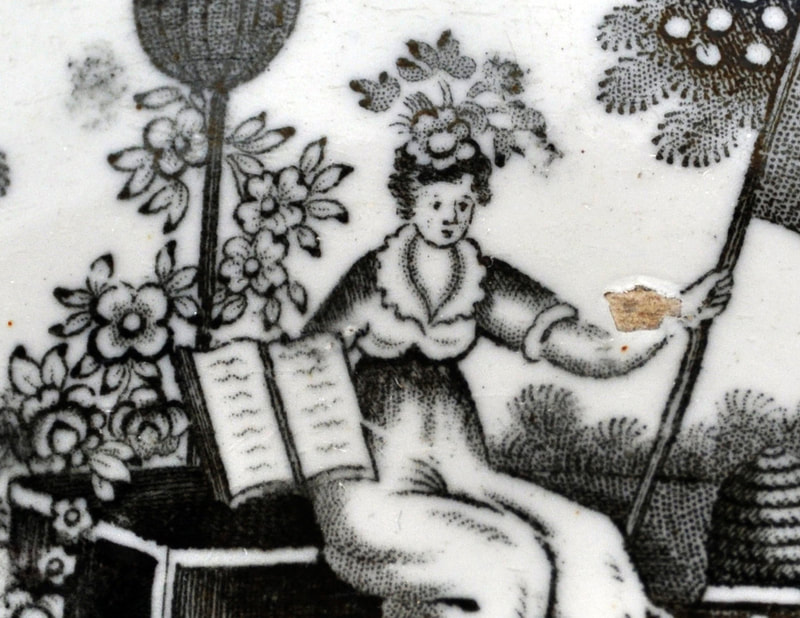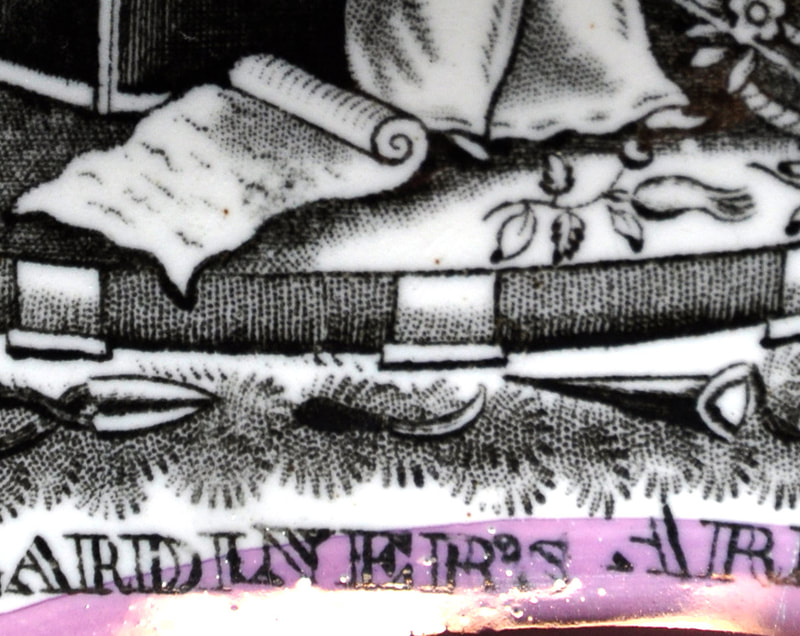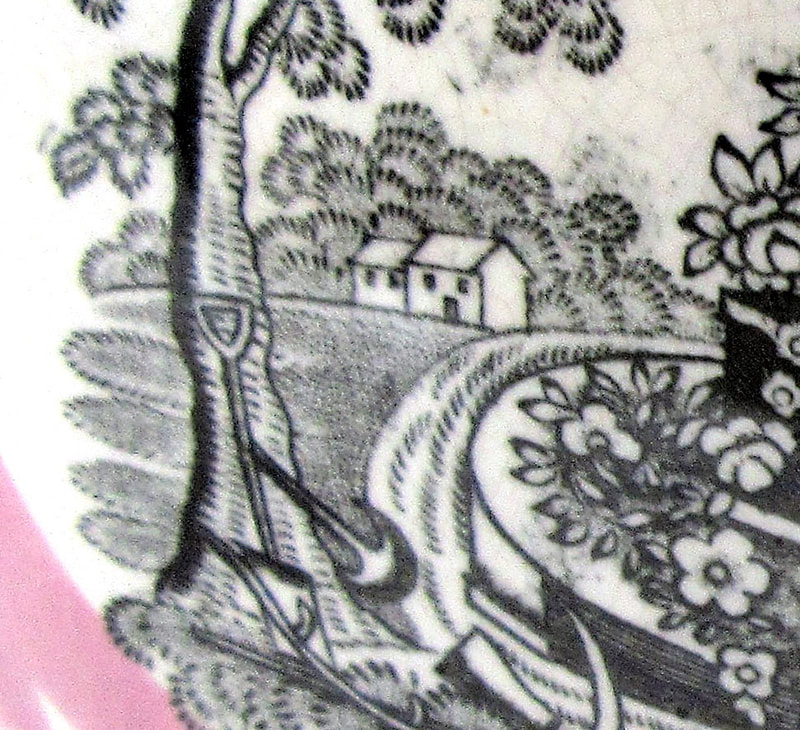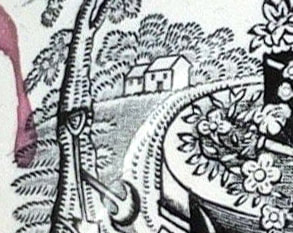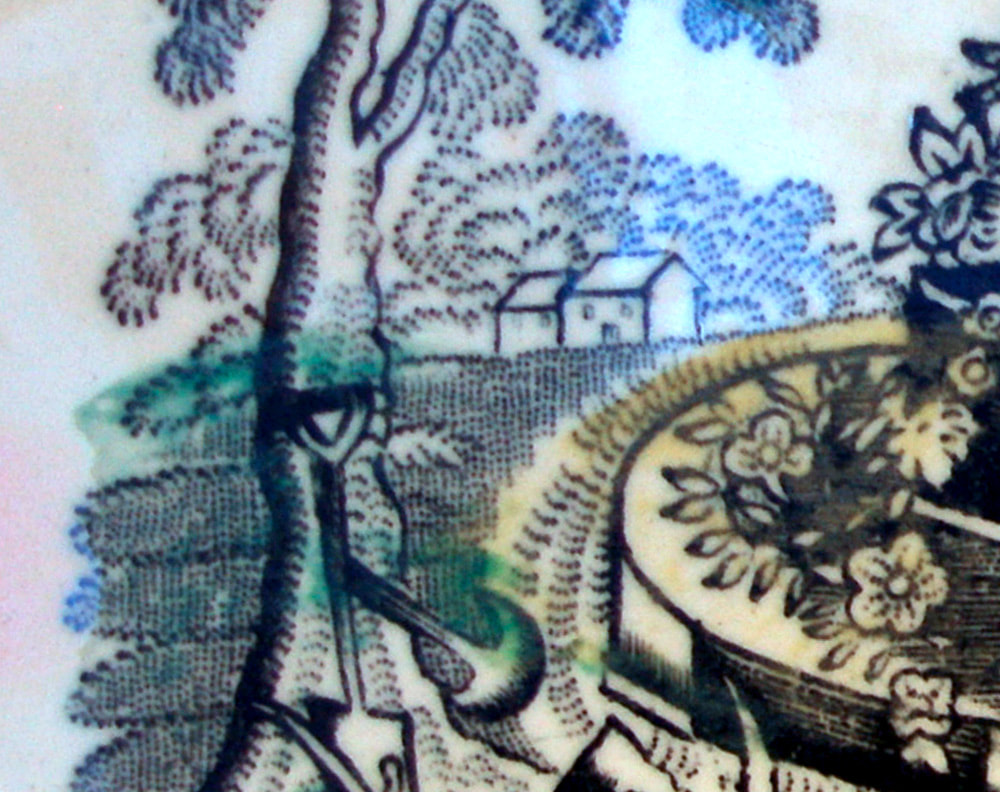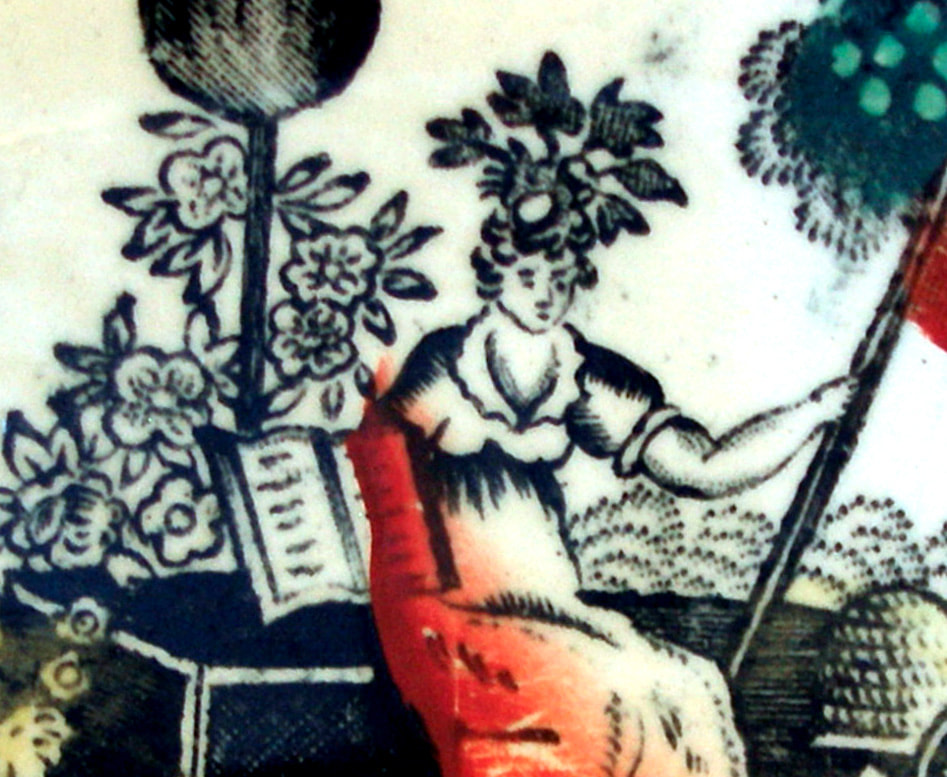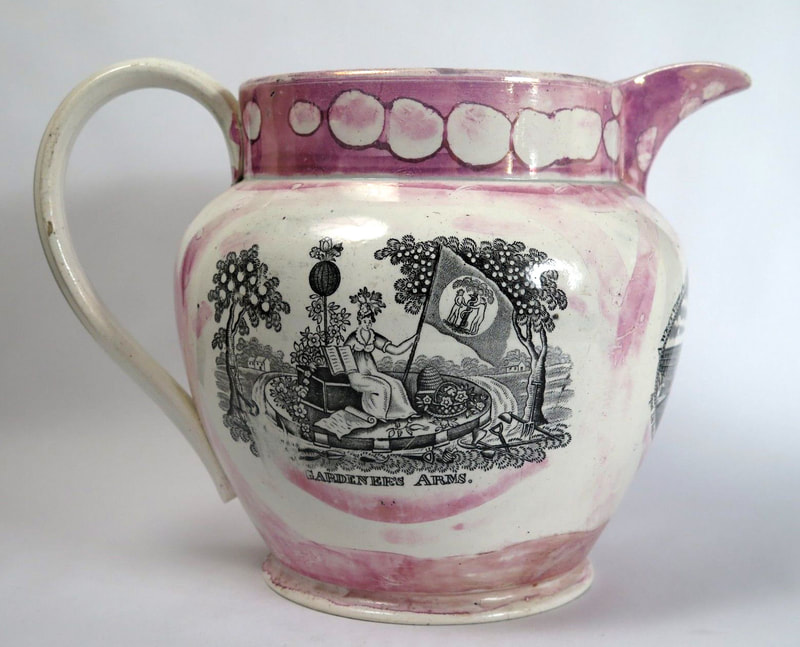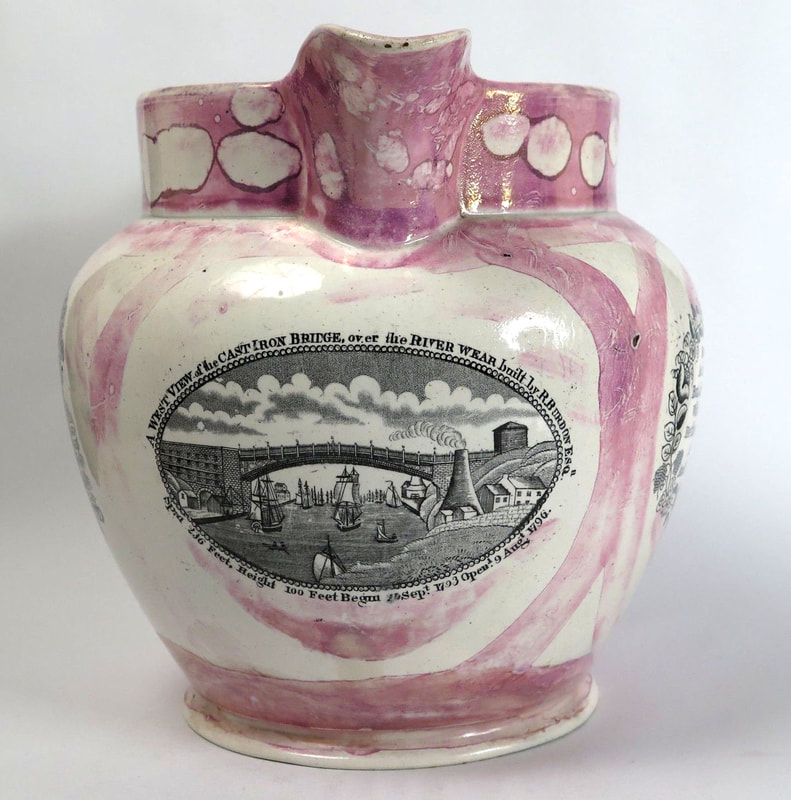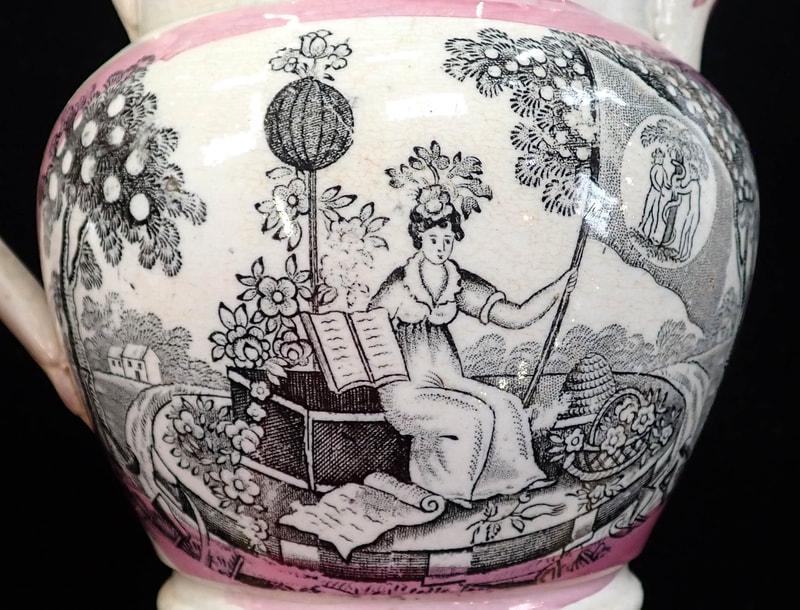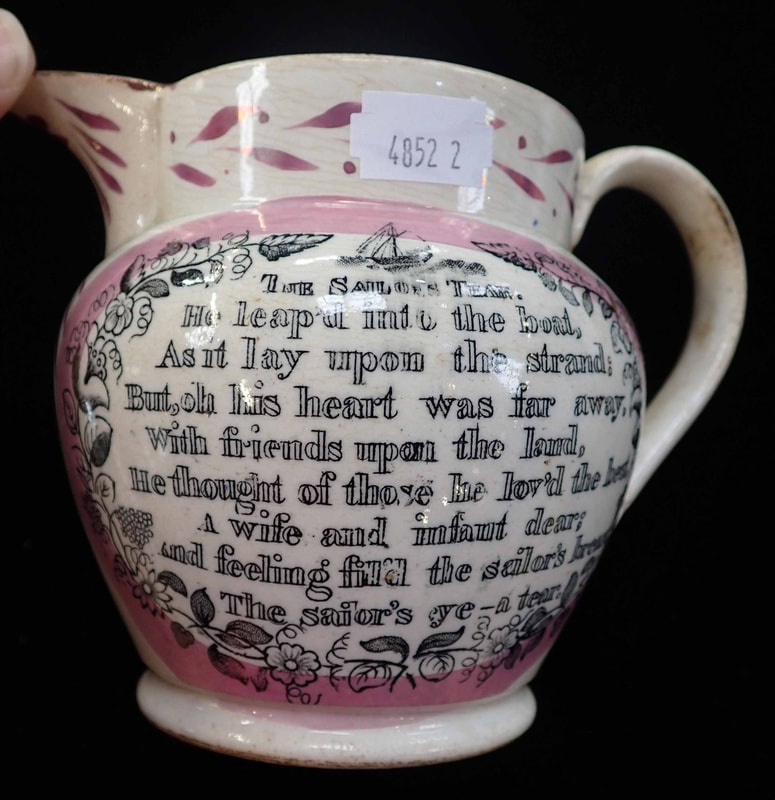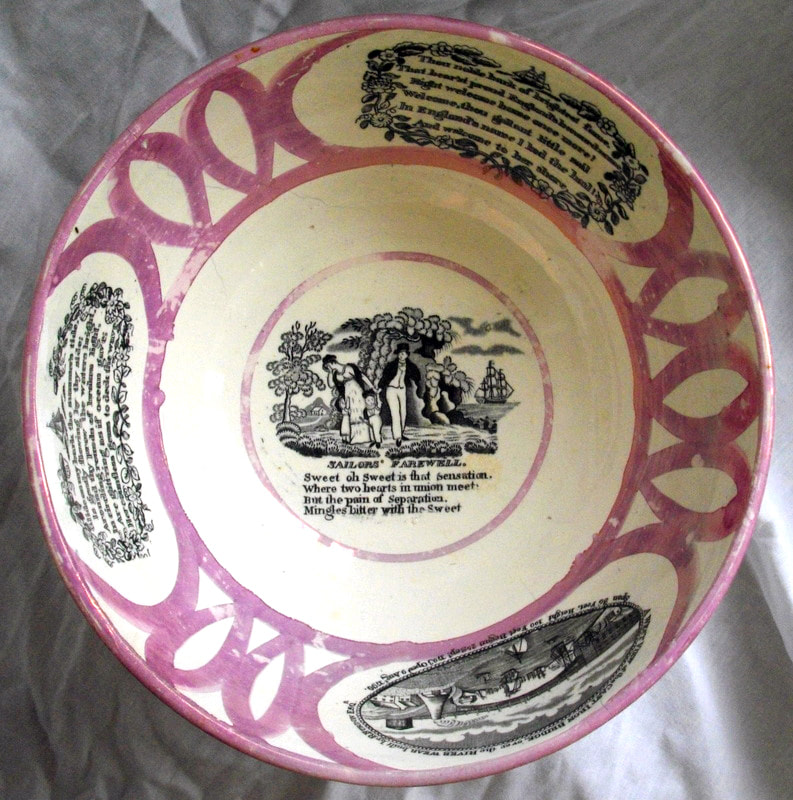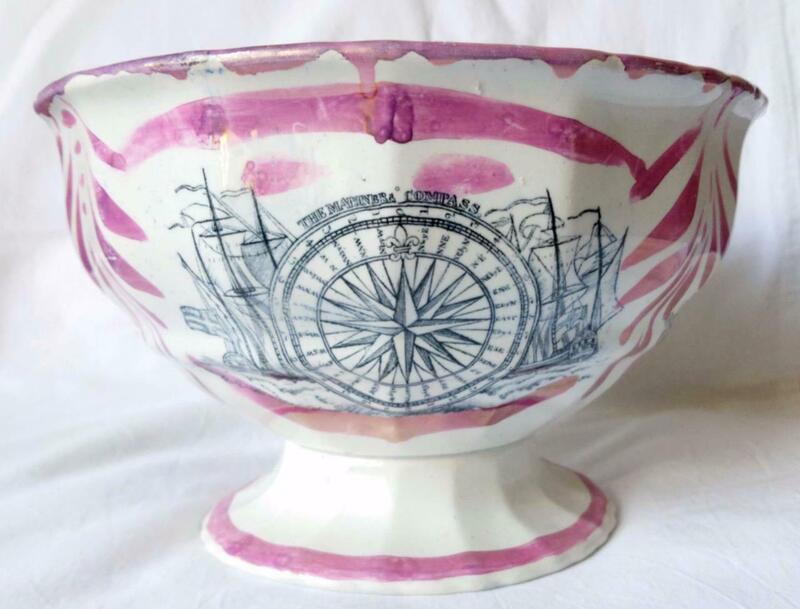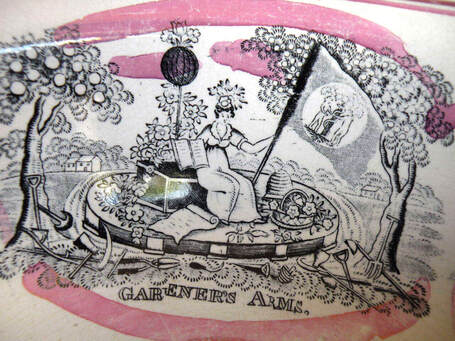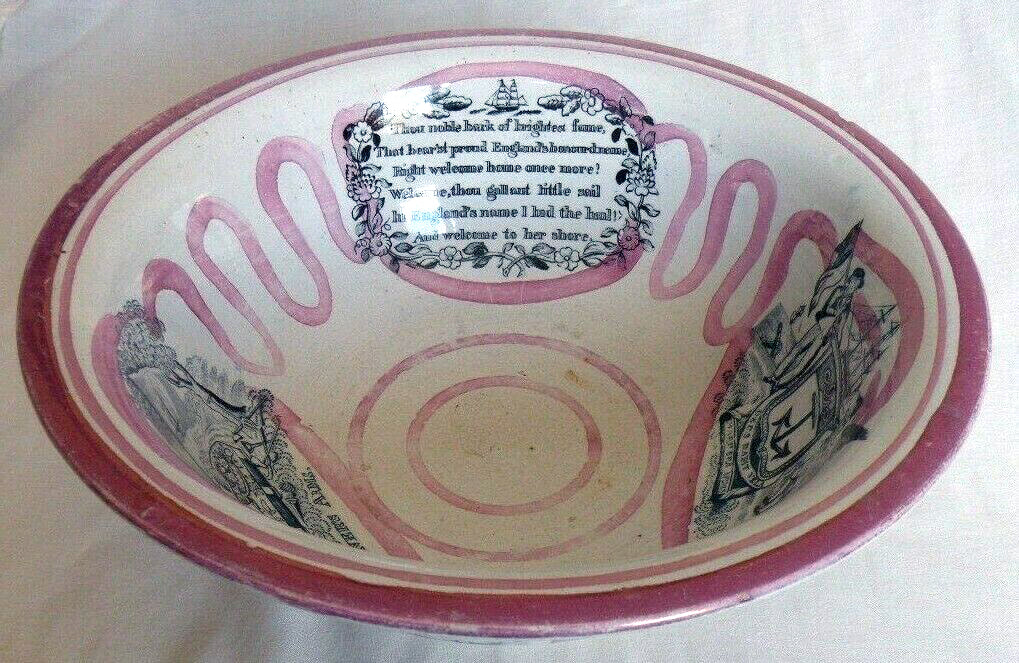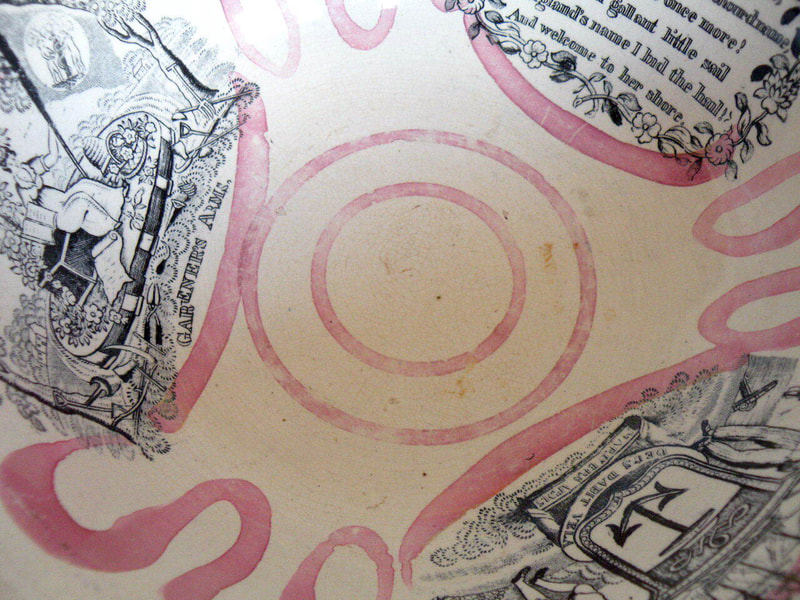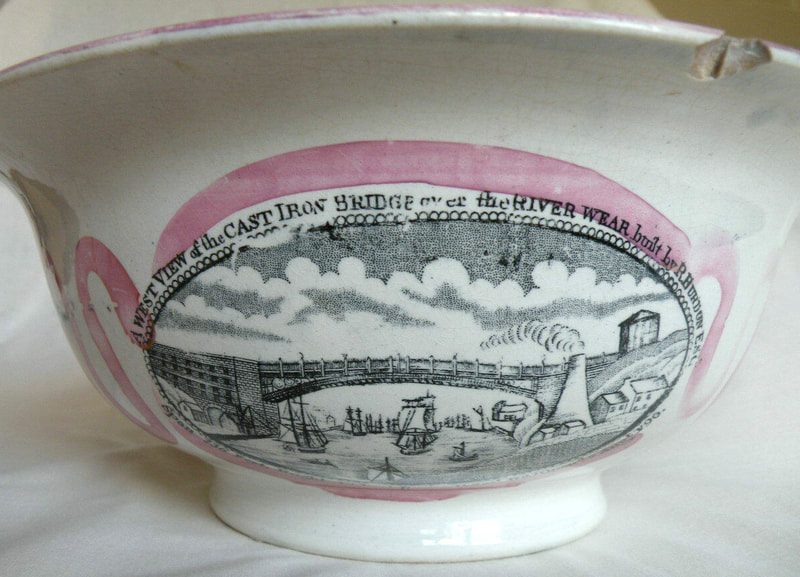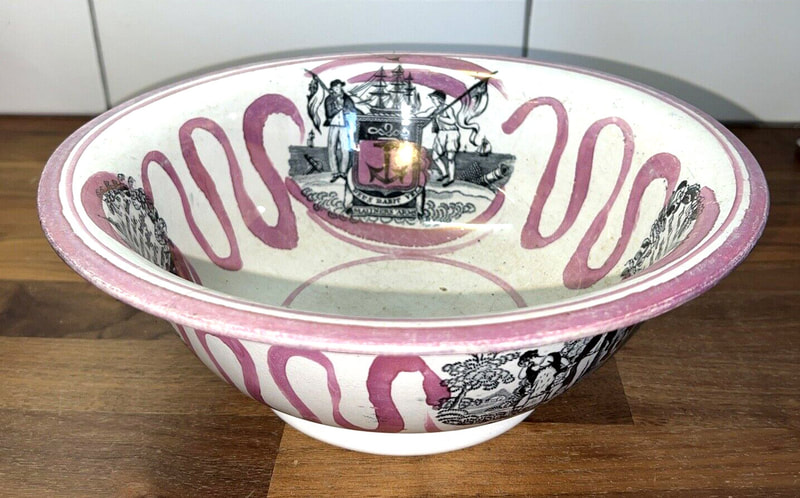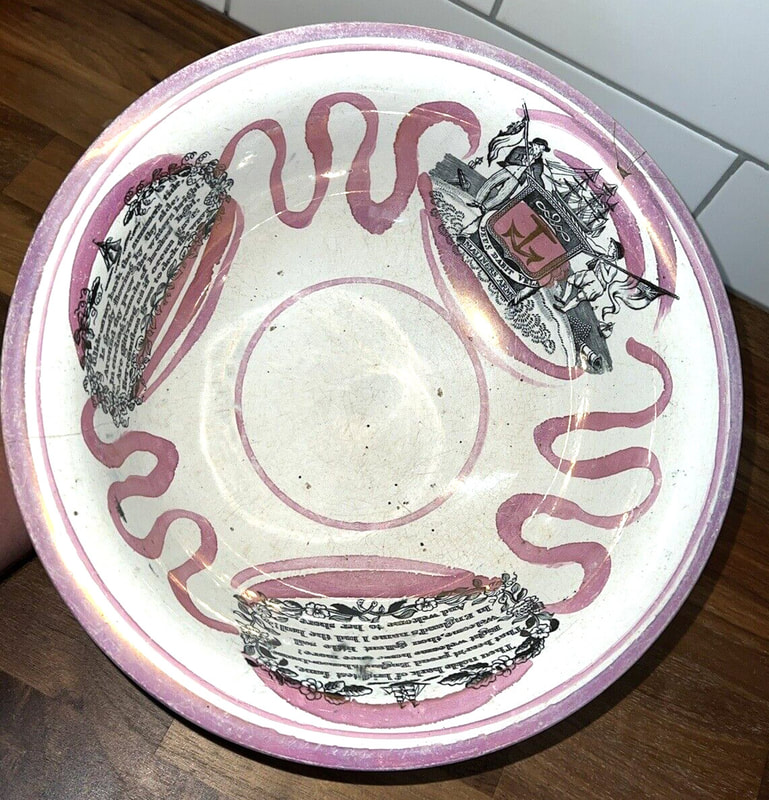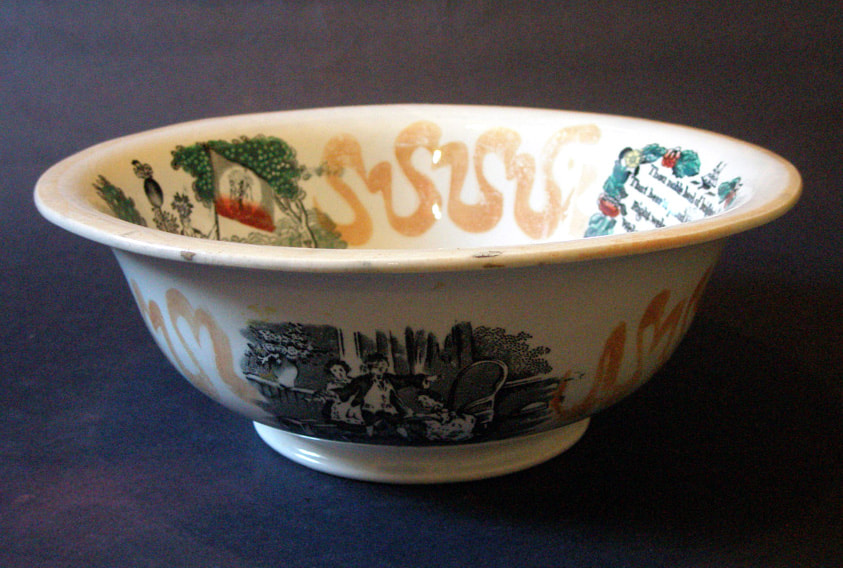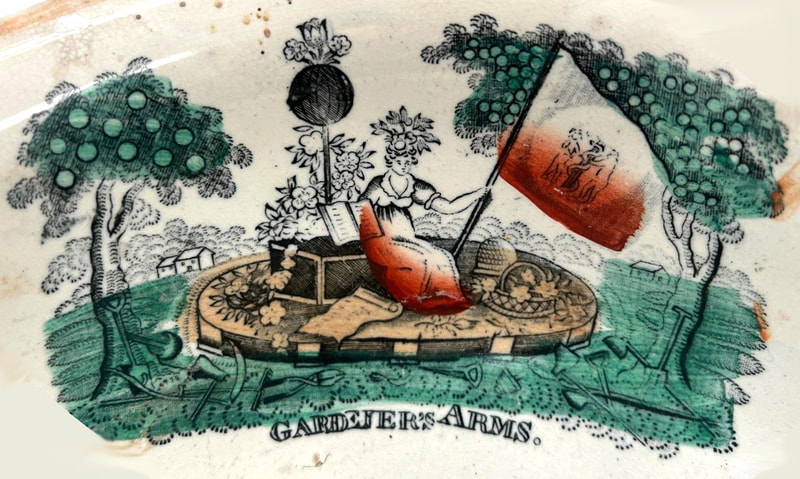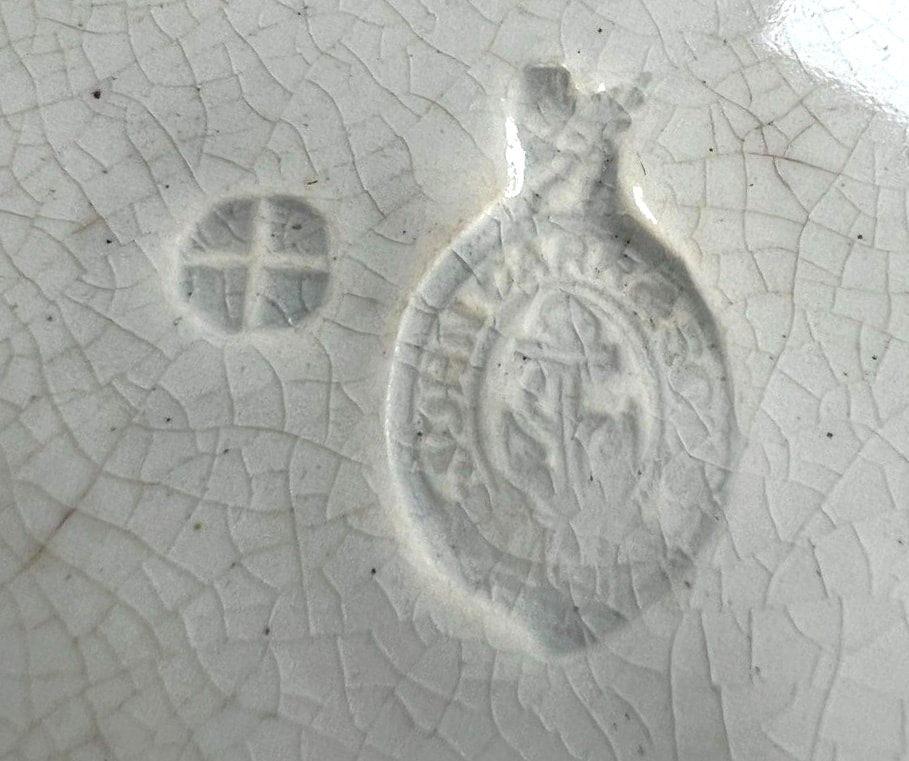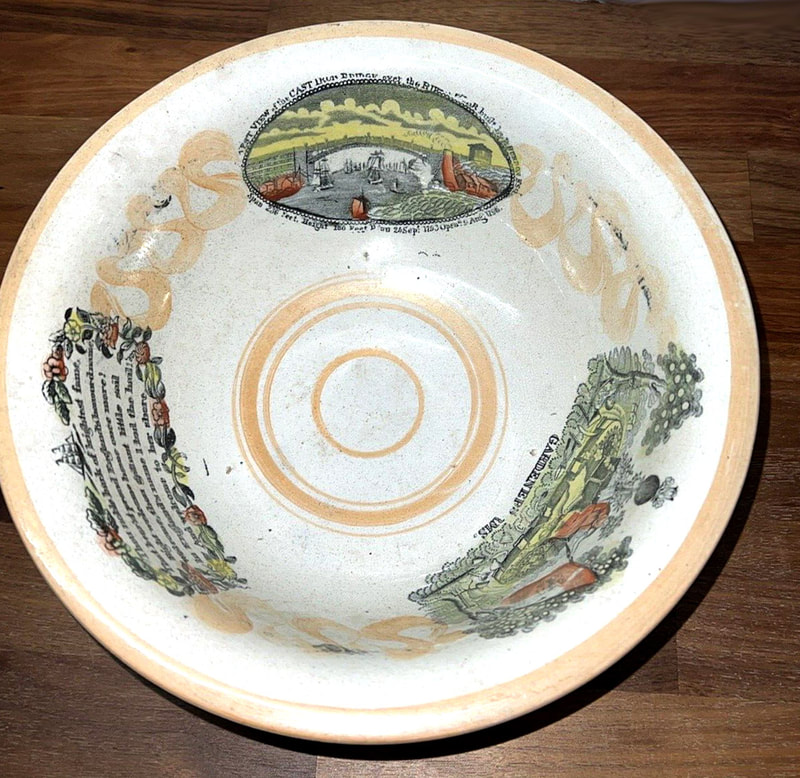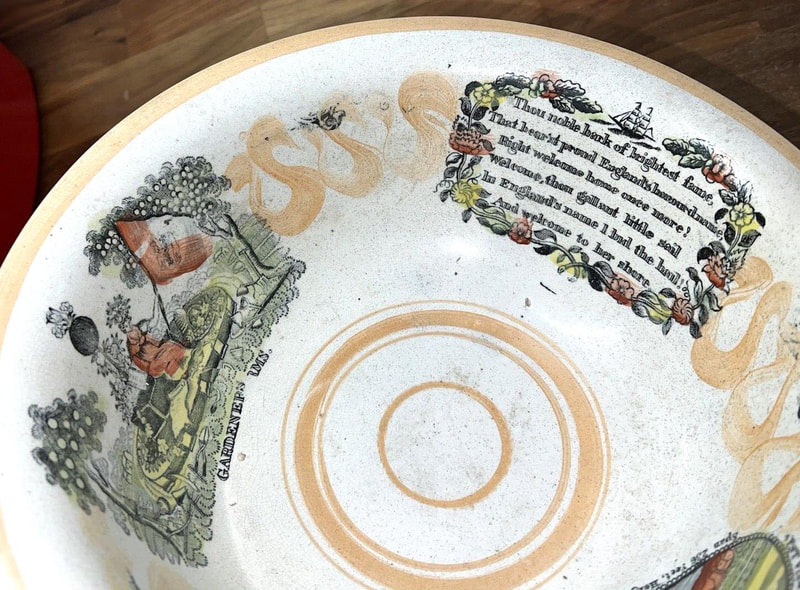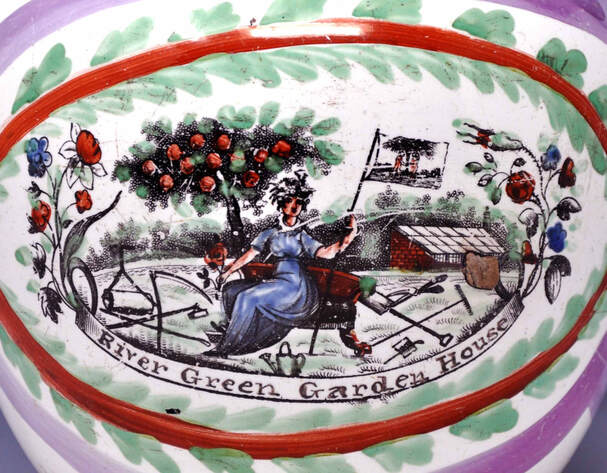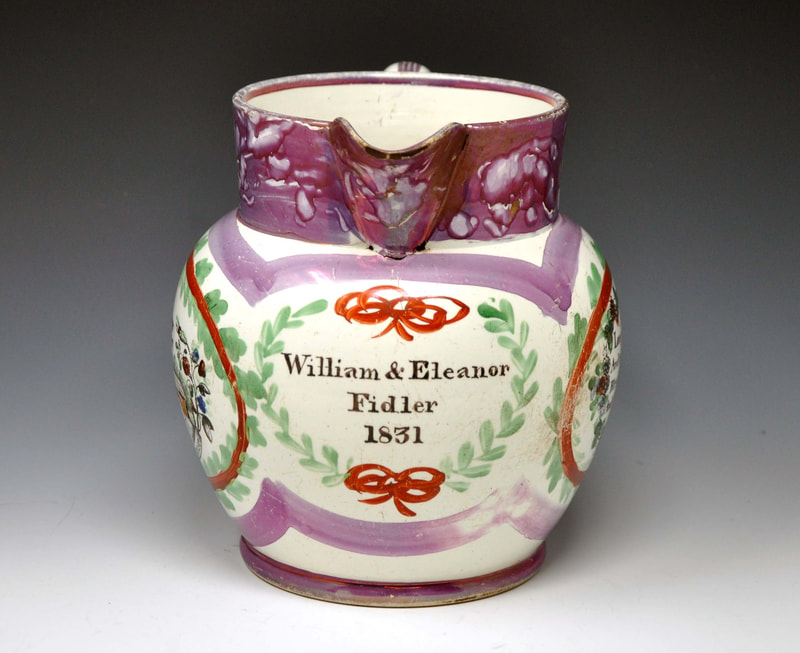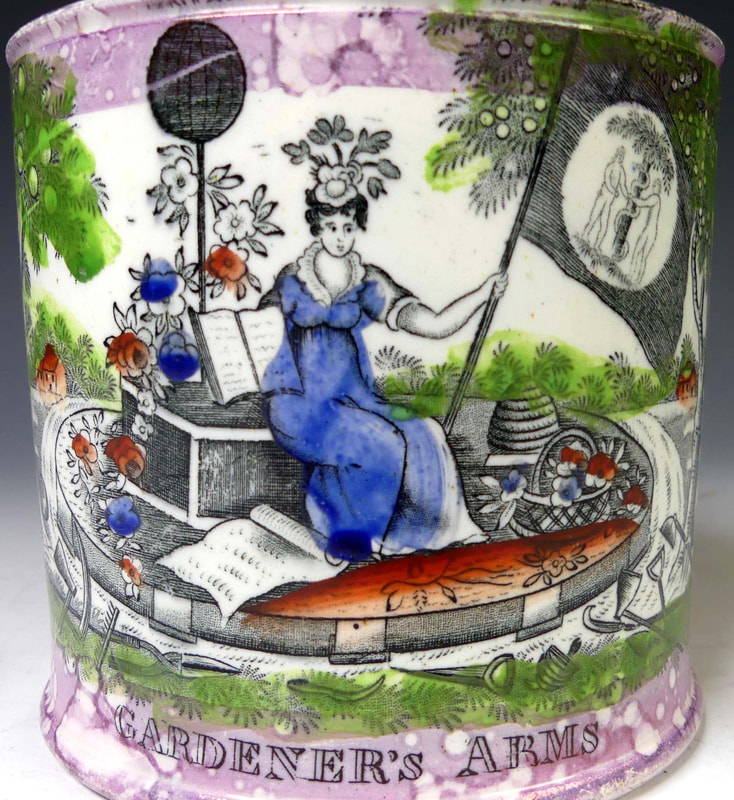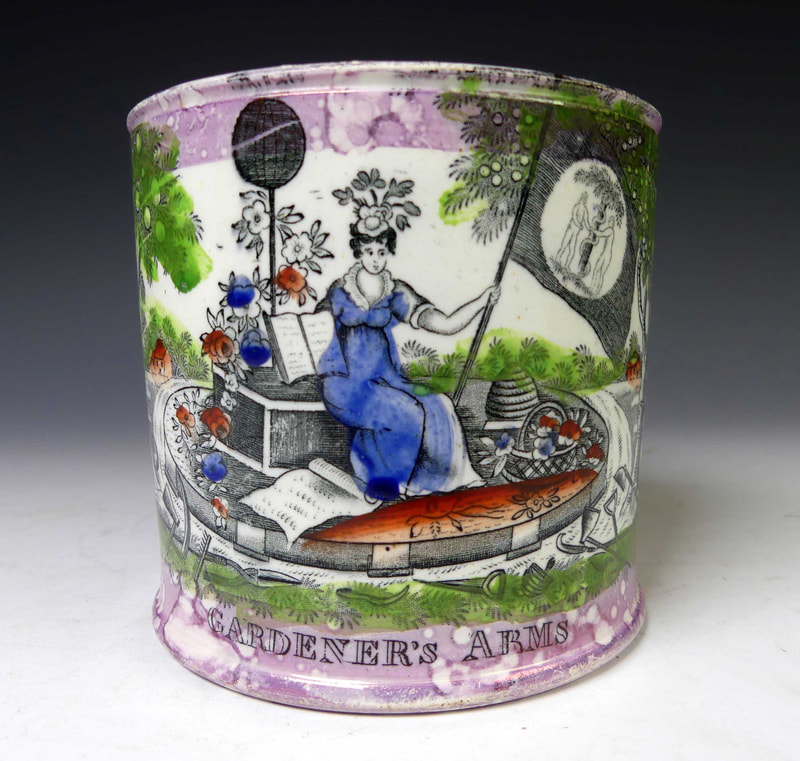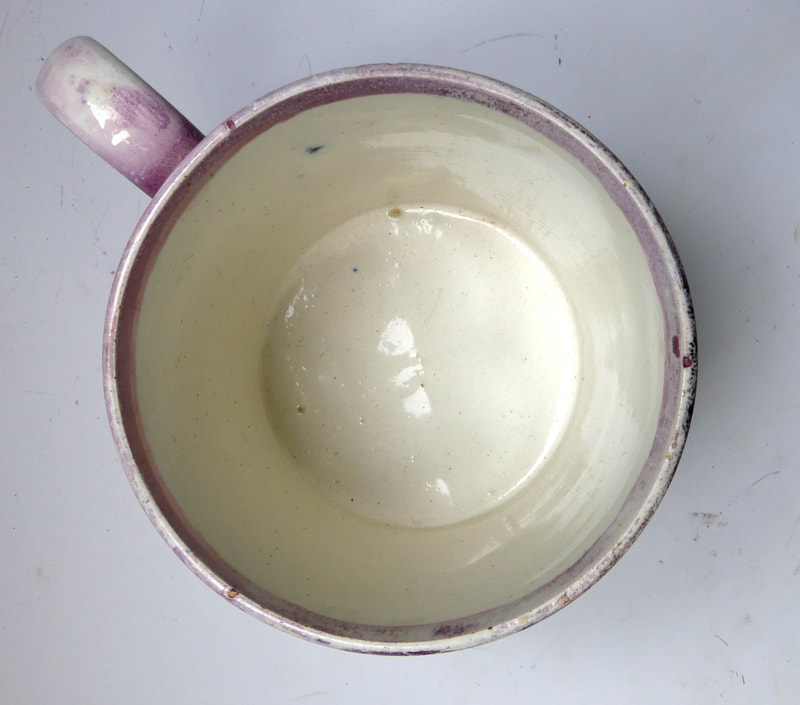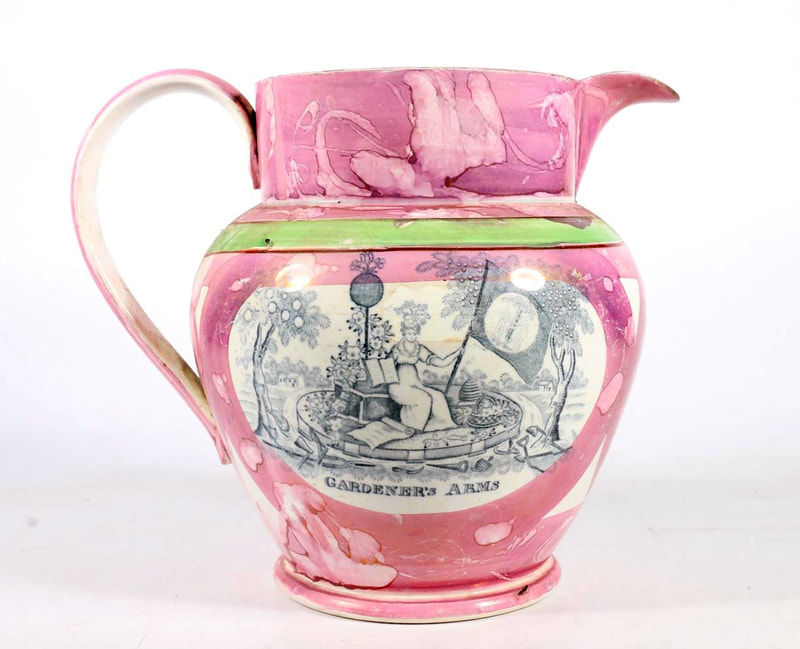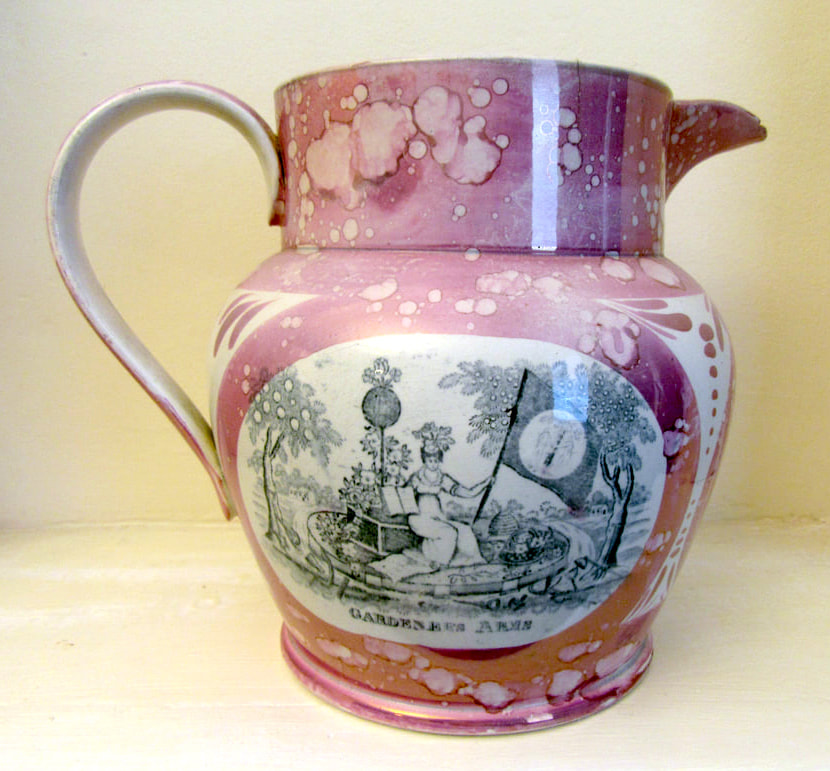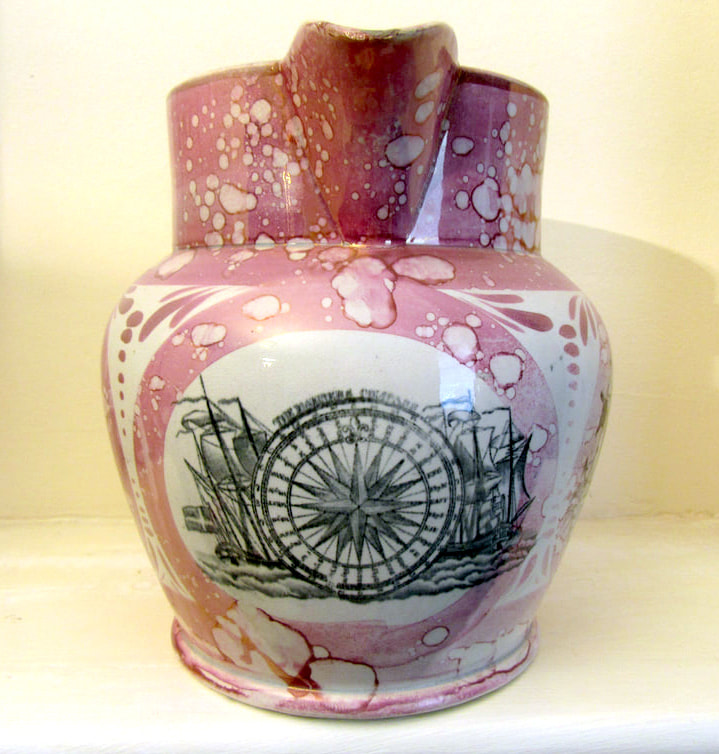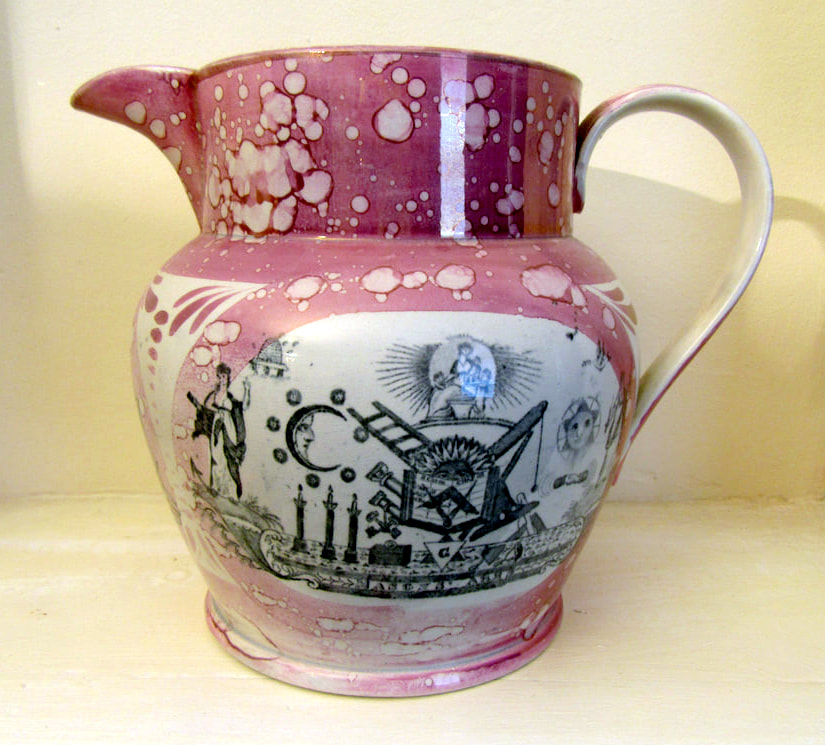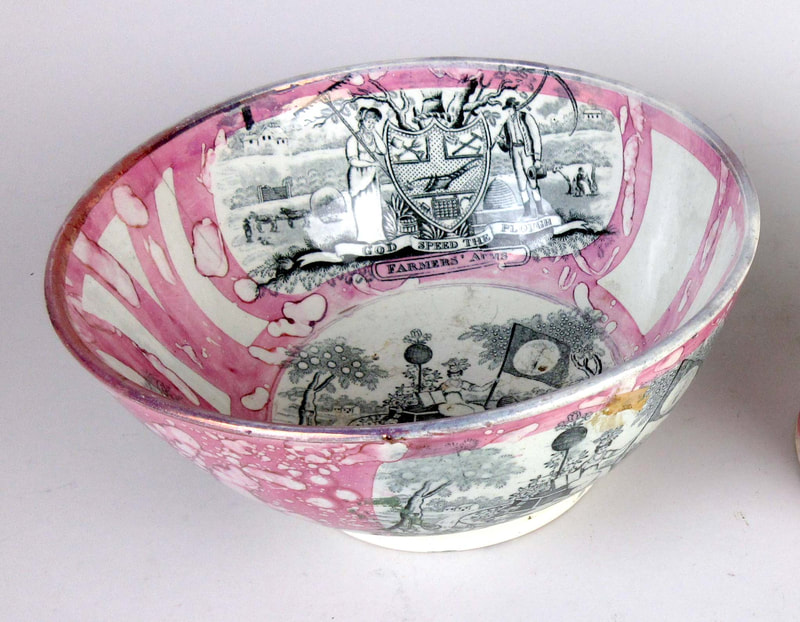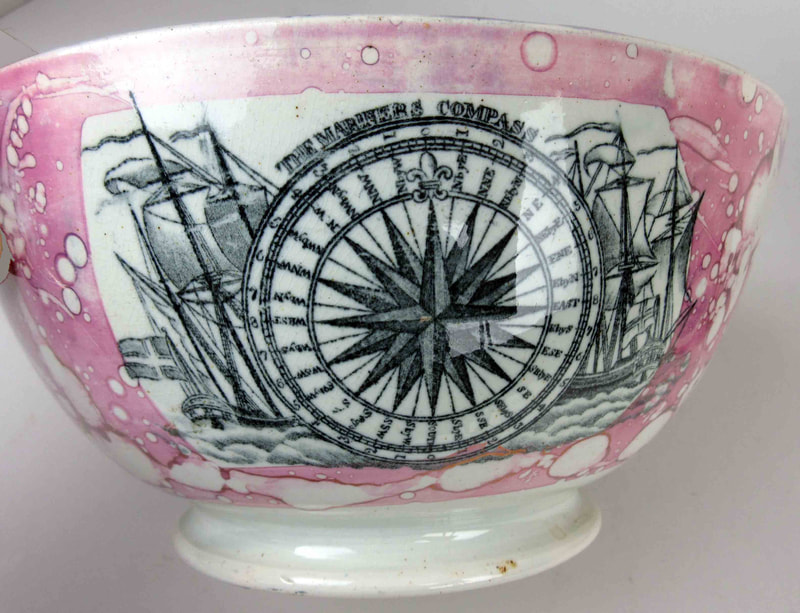Gardeners' Arms – Sunderland
Dixon, Phillips & Co, Garrison Pottery
A crisp early imprint of the transfer (c1840) from a frog mug, with a typical large Dixon frog.
An impressed bowl with the transfer from the 1840s. The Dixon, Phillips and Co impress was used from about 1839–1850.
Two similar jugs with the Dixon version of the Northumberland 74 transfer.
An imprint of the transfer on a jug from c1850.
The jug below is possibly from the same transfer plate. The flowers around the collar are particular to Dixon's.
Moore & Co's Wear Pottery c1830s
Moore & Co's Wear Pottery c1840
Scott's Southwick Pottery
The first jug above has a printed mark for Scott of Southwick. The flowers around the collar of the jugs are typical of that pottery.
The mug below, although unmarked, comes from the same transfer plate. Note the small vertical nick above the 'M' in arms. The first detail above is from the jug. The second mug also appears to be from the same transfer plate, although the flaw above the 'M' is harder to see.
Gardeners' Arms – Tyneside
Attributed to Cornfoot, Carr & Co, North Shields, 1832–1838
A version of the transfer attributed to the above 1830s' North Shields partnership. This jug is decorated with horizontal lustre strokes on the handle typical of that pottery.
Attributed to Cornfoot, Carr & Co, North Shields, 1832–1838 or
Carr and Patton, North Shields, 1838–1846
Another version of the transfer on a heavily lustred North Shields jug. The title has been trimmed from the bottom on this jug, but can be seen on the second jug below. In the absence of a dated inscription, it is hard to date these items precisely. However, the horizontal lustre strokes on the handle on the handle tend to be freer on the later Carr and Patton items, and the potting can be heavier (less fine), particularly on the larger jugs.
Attributed to John Carr & Sons, North Shields, 1840s – plate 1
The bowl below is finely potted and could easily be mistaken for wares made by Dixon in Sunderland. Note the black shape in the crook of Flora's right knee. This appears in all of the Carr versions, but not the Dixon versions..
The 1840s jug below has a small ship transfer under the spout, which is typical of North Shields.
Carr plate 1
I thought at first that this bowl was an earlier imprint from the same copper transfer plate as the jugs and London-impressed bowls in the next section. However, compare the foliage behind the houses in the left detail with plate 2. It is possible that the difference could be accounted for by re-engraving over time, but I'm unsure.
Carr plate 2
These second details are from the first jug below. The image is more cartoonlike with the subtleties of shading lost.
The next details are from the London-impressed bowl below. Later imprints of the transfer are easy to identify. There's a black horizontal mark between Flora and the flag (see centre detail).
Carr plate 3
A different version of the Carr transfer, found on the pink-lustre Carr-impressed bowl below from the 1860s. There are obvious differences in the left and right details, from those above.
This is a later version of plate 3 from the 1870s, after re-engraving to restore clarity to some of the details. The details are from the orange lustre bowl below with the Carr stags head impress.
Attributed to John Carr & Sons, North Shields, c1850 – plate 2
The distinctive lustre decoration around the collar is particular to North Shields.
Attributed to John Carr & Sons, North Shields – London impressed mark – plate 2
London impressed marks were used by several Tyneside potteries. This particular impress is found on plaques reliably attributed to Carr.
Both Dixon and Carr appear to have produced these heavily potted moulded bowls with a pedestal. The wavy lustre decoration is typical of Carr. The bowl likely dates from after 1860 and also has an impressed London mark.
This transfer is the same as on the pedestal bowl above. This time on a large wash bowl, again with typical Carr lustre decoration and an impressed London mark.
John Carr & Sons, North Shields, c1860s – impressed stag mark – plate 3
A pink lustre bowl with typical wavy decoration and an impressed mark. Ian Sharp writes that he John Carr and Sons impressed mark with stags head was used 1861–1896.
John Carr & Sons, North Shields – impressed stag mark – plate 3
This version on an orange lustre bowl likely c1870.
Below, two similar bowls with the stag's head impress. The first bowl, has a second smaller impressed mark, like a hot cross bun, beside the Carr impress.
Attributed to Robert Maling, Ouseburn Bridge Pottery
A rare version of the transfer with the hand-painted title 'River Green Garden House' and an inscription dated 1831.
Attributed to James Wallace & Co, Forth Banks, Newcastle Pottery – 1838–1858
This version of the transfer is very similar to the one used by the Garrison Pottery. However, the dark mottled lustre (similar to that found on reproduction items) was used by the Newcastle Pottery in the 1830s and 40s.
On the jugs below, it pairs with a Masons' Arms transfer associated with the Newcastle Pottery. The green band decoration on the first jug appears to be peculiar to Newcastle Pottery.

